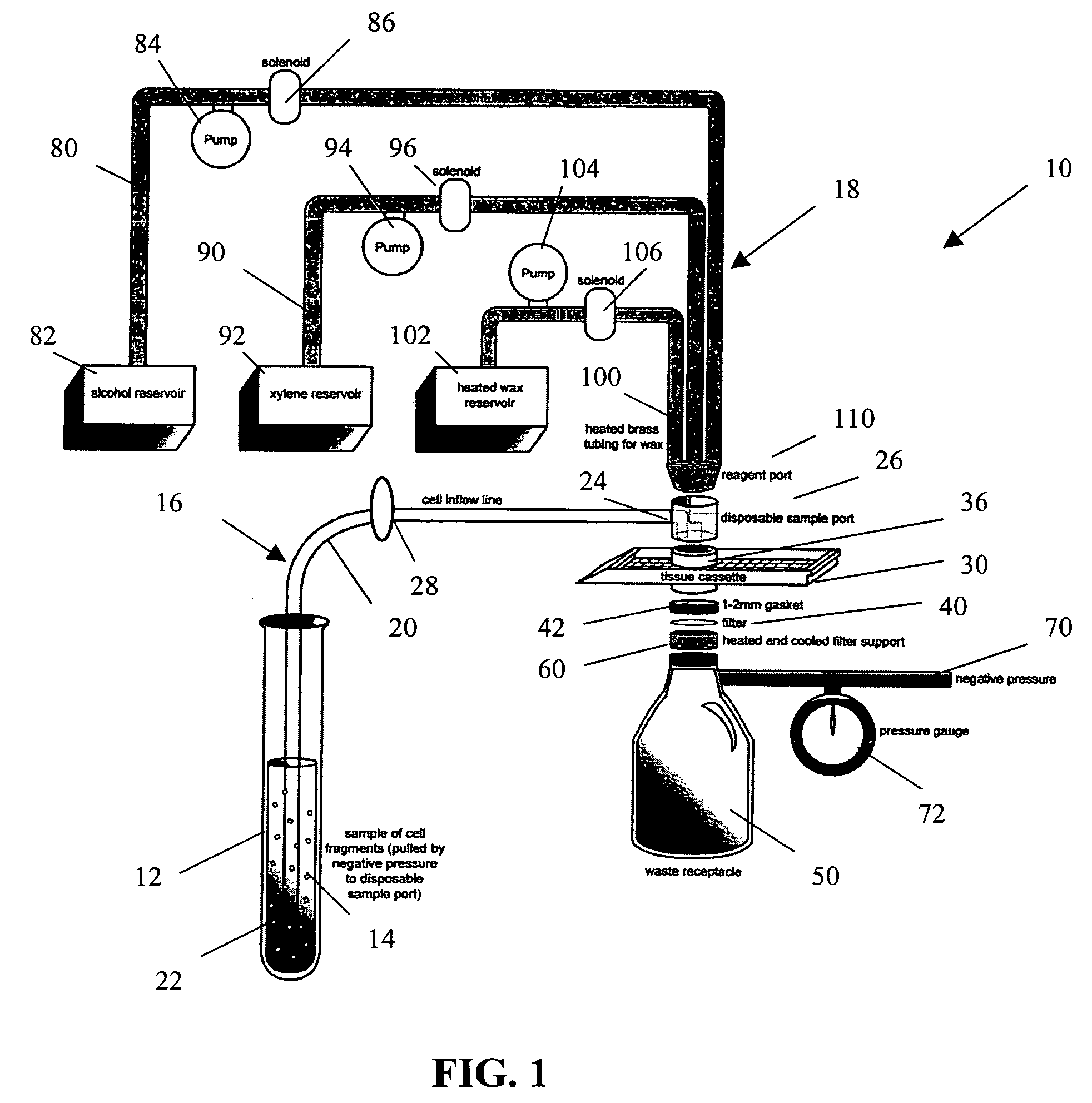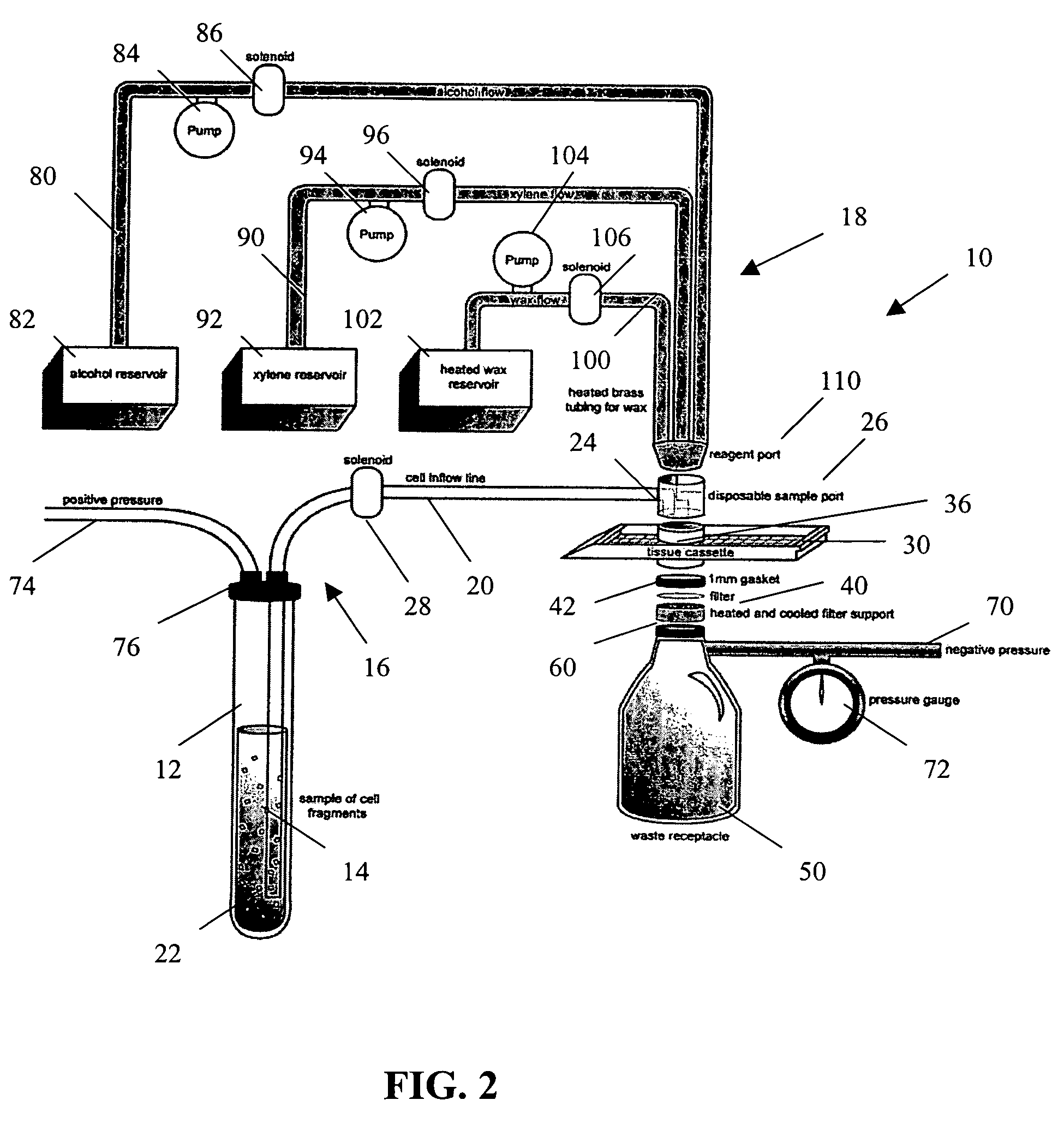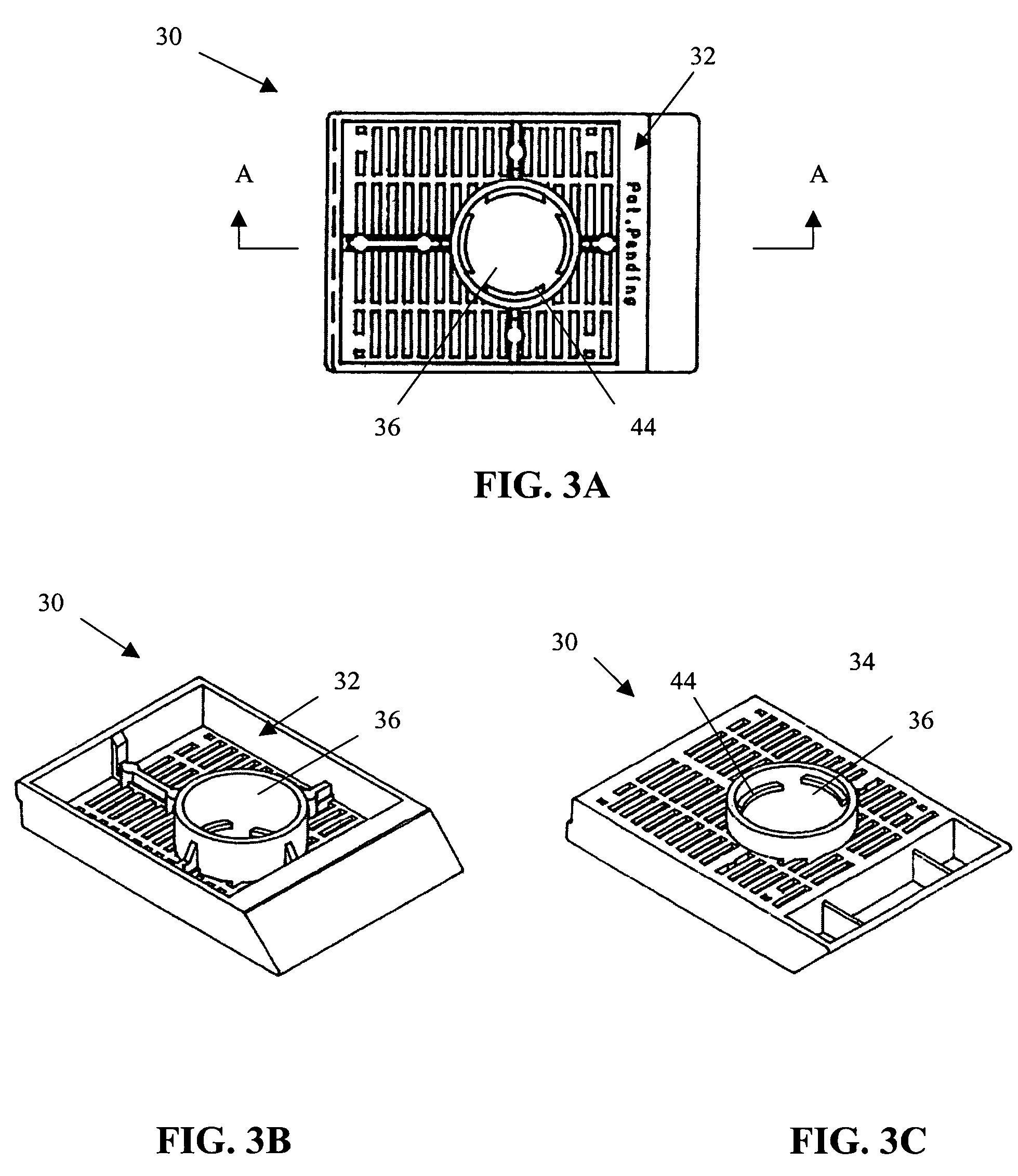Method and apparatus for preparing cells for microtome sectioning and archiving nucleic acids and proteins
a technology of nucleic acids and cells, applied in the field of methods and apparatuses for preparing cells for microtome sectioning and archiving nucleic acids and proteins, can solve the problems of inefficient showing diagnostic cells in the final microtome section, inconvenient processing, and high cost, so as to reduce the amount of cellular sample required, maximize the efficiency of cell recovery and extraction, and minimize the amount of processing time
- Summary
- Abstract
- Description
- Claims
- Application Information
AI Technical Summary
Benefits of technology
Problems solved by technology
Method used
Image
Examples
Embodiment Construction
[0026]The present invention provides a method and apparatus for rapidly preparing a cell block for sectioning with a microtome. The cell block embedding apparatus 10 of the present invention is designed as a flow-through system. As shown in detail in FIG. 1, the apparatus 10 comprises a cell flow pathway 16 defined by an inflow tube 20 which has an inlet end 22 configured for placement within a container 12 holding a cell sample 14 therein and an outlet end 24 which removably connects to a disposable sample port 26. A solenoid tube clamp 28 can be disposed along the inflow tube 20 for regulating the flow of fluid through the tube 20. The container 12 can comprise any suitable shape, form, or size. For example, and as illustrated, the container 12 can be a standard 50 ml disposable centrifuge tube. The cell sample 14 can be in suspension in a physiologic saline solution such as Hanks buffered saline, or in a liquid preservative such as 50% aqueous alcohol. The cell suspension can be ...
PUM
 Login to View More
Login to View More Abstract
Description
Claims
Application Information
 Login to View More
Login to View More - R&D
- Intellectual Property
- Life Sciences
- Materials
- Tech Scout
- Unparalleled Data Quality
- Higher Quality Content
- 60% Fewer Hallucinations
Browse by: Latest US Patents, China's latest patents, Technical Efficacy Thesaurus, Application Domain, Technology Topic, Popular Technical Reports.
© 2025 PatSnap. All rights reserved.Legal|Privacy policy|Modern Slavery Act Transparency Statement|Sitemap|About US| Contact US: help@patsnap.com



